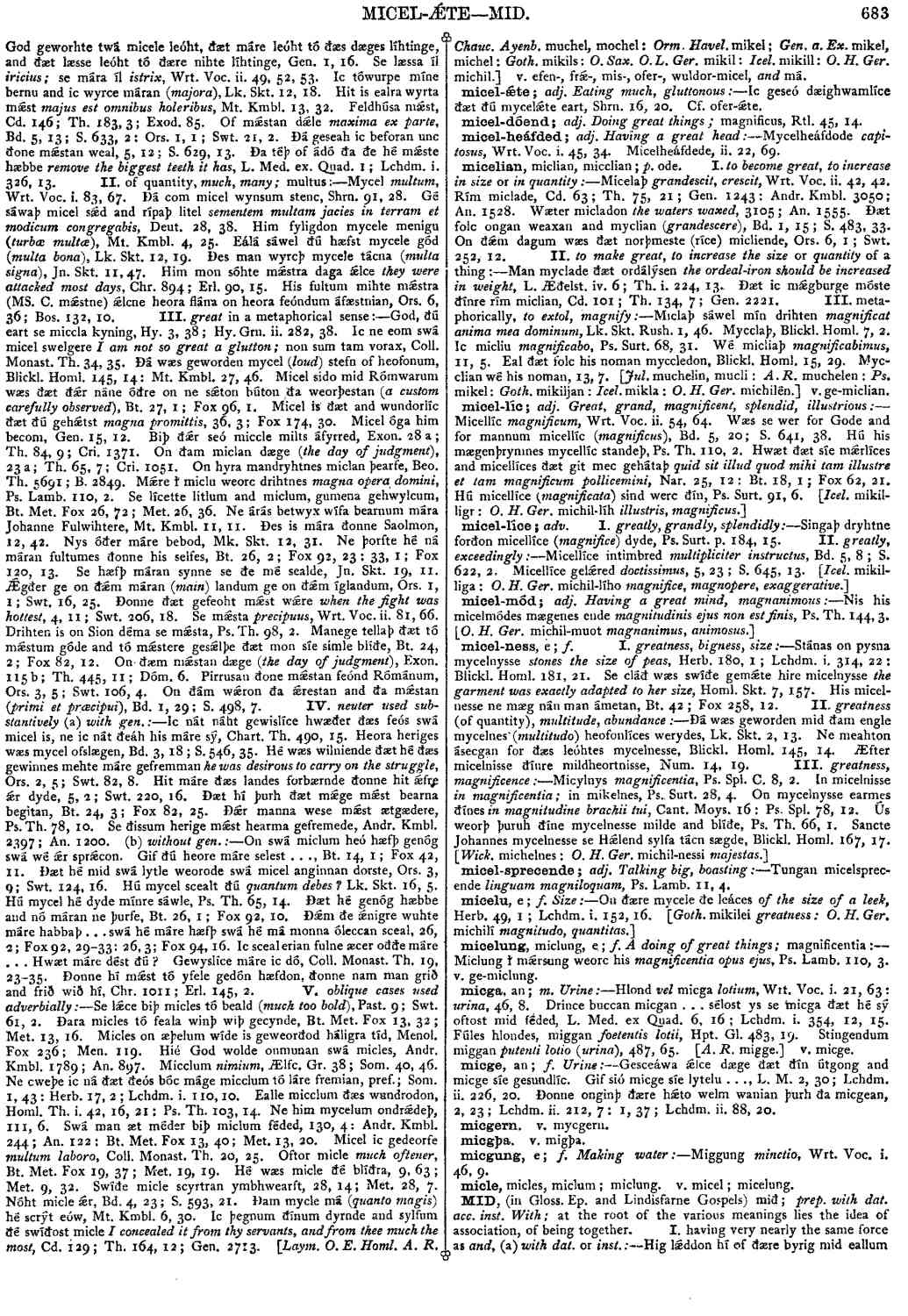The Gothic language, a historical Germanic language, possesses unique linguistic features that offer a glimpse into the past. One such feature is the word “*miþ*,” a preposition with a rich tapestry of meanings and connections. This comprehensive guide delves into the world of “*miþ*,” exploring its core meaning, usage as a preposition and prefix, and its broader linguistic significance.
Understanding the Multifaceted Miþ: A Core Concept
Miþ, a seemingly small word, plays a significant role in Gothic grammar and carries a core meaning of “togetherness” or “accompaniment.” It acts as both a preposition and an adverb, much like a linguistic multi-tool. Imagine two companions on a journey—that sense of being with each other encapsulates the essence of miþ.
The word’s probable ancestor is the Proto-Germanic “midi,” suggesting similar words with comparable meanings existed in other Germanic languages, such as Old English and Old Norse. This shared ancestry highlights the interconnectedness of these languages and their common roots.
In its role as a preposition, miþ frequently partners with the dative case, a grammatical case indicating indirect objects. This combination specifies who or what accompanies someone or something else. Miþ can also function as an adverb, adding a sense of “along” or “together” to a verb. Furthermore, it can appear as a prefix, creating words implying joint action or collaboration.
If a Gothic speaker wanted to express “I walked with my friend,” they would likely use miþ alongside the dative form of “friend.” If they described two people building a house together, the verb for building would probably be prefixed with miþ, implying a joint effort.
Here’s a summary of miþ‘s functions:
| Form | Function | Meaning |
|---|---|---|
| Preposition | With dative | Accompaniment, association |
| Adverb | Modifies verb | Along, together |
| Prefix | Part of verb | Joint action, collaboration |
While the grammatical rules are essential, the true essence of miþ lies in its practical application within Gothic texts. Scholars continue to explore the nuances of its meaning in various contexts, suggesting possible variations in meaning over time and regions. Ongoing research constantly sheds light on miþ‘s intricacies.
Miþ serves as a window into the rich and complex world of the Gothic language, reminding us that language is a dynamic reflection of culture and worldview. By studying words like miþ, we gain a glimpse into the lives of people who lived centuries ago. If you’re a baseball enthusiast, you won’t want to miss out on the Major League Baseball Tournament mlbt this year. Stay tuned for updates! And if you are into dance music, you can check out the DJ World United Music Festival meaning of dwu where many DJs show off their sick beats.
Miþ as a Preposition: Nuances of Togetherness
Miþ‘s most common role is as a preposition, similar to “with” in English. However, its precise meaning can shift depending on the grammatical case of the following word. Think of it as a Swiss Army knife with different settings for various purposes.
Miþ and the Dative: Expressing Accompaniment
When followed by the dative case, miþ conveys accompaniment or association. For instance, “miþ imma” translates to “with him.” “I went to the market miþ imma” means “I went to the market with him.”
Miþ and the Instrumental: Indicating Instrumentality
With the instrumental case, miþ signifies instrumentality, indicating how something is done. “Miþ staf,” meaning “with a staff,” suggests the staff is a tool used for walking, support, or defense. “He walked miþ staf” translates to “He walked with a staff.”
Miþ and the Accusative: Conveying Manner
Less frequent is miþ‘s use with the accusative case, conveying the manner in which an action is performed. “Miþ mikilamma garai” means “with great care,” describing how something is done. “She handled the fragile vase miþ mikilamma garai” means “She handled the fragile vase with great care.”
Ongoing research continues to refine our understanding of miþ and its interactions with different cases. This constant exploration highlights the dynamic nature of historical linguistic research.
Miþ- as a Prefix: The Power of Collaboration
Beyond its prepositional role, miþ- can function as a prefix, intensifying the sense of joint action and cooperation when attached to verbs. The prefix acts as a linguistic glue, binding verbs to create a sense of shared experience. Miþ- emphasizes the togetherness in collaborative activities. It suggests joint action, or working together. For example, miþarbaidjan means “to work with,” emphasizing collaboration. Similarly, miþgaggan translates to “to go together with,” highlighting the shared journey and companionship. This collaborative aspect is a common function of miþ-.
However, miþ- can also signify the inclusion of another person or object in the action. This is known as the applicative function and further expands its meaning.
The classification of miþ- as a prefix or a preverb (a word modifying a verb) is complex. It sometimes acts as a true prefix, becoming inseparable from the verb, while at other times, it maintains some distance, resembling an independent word influencing the verb’s meaning. This dual nature makes miþ- a particularly intriguing linguistic element.
Current research indicates that miþ- primarily denotes joint actions, teamwork, or shared experiences in Gothic verbs, but it may also introduce additional participants or objects to the action, broadening its scope. Its dual nature as prefix and preverb adds to the complexity of the Gothic language. New discoveries and interpretations can further refine our understanding, suggesting that the study of miþ- is far from complete.
Key Points about Miþ:
- Definition: A Gothic preposition primarily expressing accompaniment, similar to “with.”
- Main Function: Indicates togetherness or the presence of someone/something with another.
- Extended Usage: Conveys instrumentality (using a tool) and manner (how something is done).
- Grammatical Role: Governs the dative, instrumental, and (less commonly) accusative cases. As a prefix (miþ-), it modifies verbs.
- Etymology: Probably derived from the Proto-Germanic word midi.
- Pronunciation: IPA: /miθ/
- Examples: miþarbaidjan (to work with), miþgaggan (to go together with).
- Further Study: Resources like Wiktionary, specialized Gothic dictionaries, and online linguistic communities can provide valuable information.
By understanding miþ‘s nuances, we gain a deeper appreciation for the Gothic language and its rich history. This exploration offers a unique perspective into the culture and worldview of the people who spoke this fascinating ancient language.
- Mastering Leader in Spanish: The Complete Guide - April 19, 2025
- Uncovering Surprising Parallels: England Size Compared to US States - April 19, 2025
- Old Mexico Map: Border Shifts 1821-1857 - April 19, 2025
















